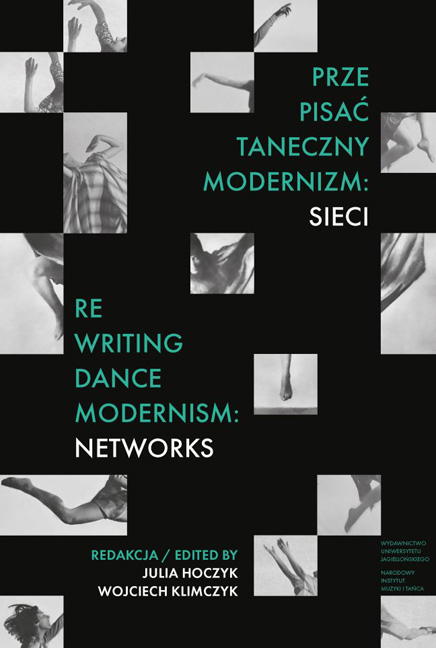Book contents
- Frontmatter
- Contents
- Prze-pisać taneczny modernizm: sieci
- Metodologie: usieciowianie tanecznego modernizmu
- Transmisje: transnarodowe trajektorie tanecznego modernizmu
- Poszerzenia: taneczny modernizm w słowiańskiej Europie Środkowej
- Methodologies: Networking Dance Modernism
- Transmissions: Transnational Trajectories of Dance Modernism
- Expansions: Dance Modernism in Slavic Central Europe
- Biogramy autorów
- Authors’ Biographies
- Indeks / Index
- Miscellaneous Endmatter
- Miscellaneous Endmatter
Selected Aspects of Czech Dance Modernism(s) in the Context of the Dance (R)evolution at the Beginning of the 20th Century
Published online by Cambridge University Press: 01 March 2024
- Frontmatter
- Contents
- Prze-pisać taneczny modernizm: sieci
- Metodologie: usieciowianie tanecznego modernizmu
- Transmisje: transnarodowe trajektorie tanecznego modernizmu
- Poszerzenia: taneczny modernizm w słowiańskiej Europie Środkowej
- Methodologies: Networking Dance Modernism
- Transmissions: Transnational Trajectories of Dance Modernism
- Expansions: Dance Modernism in Slavic Central Europe
- Biogramy autorów
- Authors’ Biographies
- Indeks / Index
- Miscellaneous Endmatter
- Miscellaneous Endmatter
Summary
Pondering the topic of “re-writing dance modernism” in the Czech context provokes one to contemplate if it is possible to review and redefine the modern and avant-garde dance era within the frame of Czech art studies, giving that the definition and the specification of these notions are nearly non-existent. However, this era can be considered without any doubt as one of the most dynamic in the development of artistic dance in the Czech milieu, which during this period progressed in parallel with the reforms and new art trends present on the European scale. The artistic legacy of the representatives of dance modernism has been mentioned by Czech theater scholars in a rather marginal way so far. It has been related especially to their intensive cooperation with particular avant-garde theater artists and ensembles. Besides, in the second half of the 20th century, several surveys and summarizing studies were written, mostly by female avant-garde and modern dance representatives themselves in an effort to recall and recapture the trace of the era between the two world wars.
Inquiring about the cause of the “oblivion” of Czech dance modernism legacy inspires a few reflections and a number of speculations. No doubt, the fundamental factor was post-war politics. After the February 1948 communist coup, the then Czechoslovakia became a part of the Soviet Union controlled bloc of countries. The liberal heritage of the interwar avant-garde art was considered as unsuitable by the communist regime. Even if the individual avant-garde representatives (mostly opposing the new regime) were not directly persecuted, they became marginalized and stripped of state support. Such was the fate of the representatives of dance modernism as well. The only accepted artistic dance style recognized nationally after the February coup was professional classical ballet, which was very Russian school oriented at the time. The modern dance legacy of the first half of the century, especially the Ausdruckstanz mostly developed between the two world wars, was banished from the professional stage in the beginning of the 1950s. In fact, this legacy survived only in the area of dance pedagogy and in the (often semi-legal) amateur dance domain during the entire duration of the communist era.
- Type
- Chapter
- Information
- Re-writing Dance Modernism: Networks , pp. 545 - 556Publisher: Jagiellonian University PressPrint publication year: 2023

